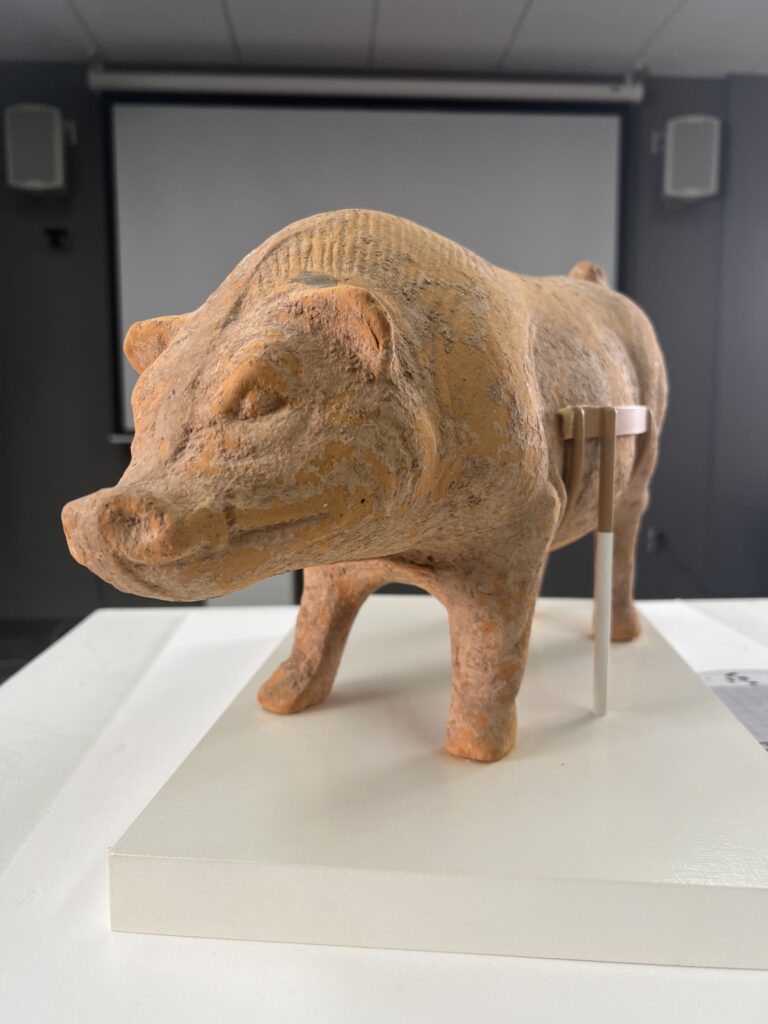My experience viewing some objects at the Perlmamn Teaching Museum was different from my experience modeling an object through the process of photogrammetry. During the museum tour, I learned about the histories and symbolisms of some artifacts. Because there were many objects in the museum I had to learn about, I never spent time analyzing the physical details of each object. Photogrammetry is quite different from the exhibition because most of my time was spent taking multiple close-up photos of the same object.
I worked with other people and we captured 95 photos from three angles to ensure that AutoDesk Recap Photo was able to generate an accurate model of the object when it processed the photos. I was not focused on the history of the object as in the case of the exhibition; instead, I tried to ensure good lighting around the object to get consistently sharp photos free from shades. Furthermore, our group encountered a problem converting the photos we took from HEIC to JPG image extensions. We tried multiple apps but they took a lot of time to convert an image. After so much try and error, we used iMazing Converter, which was able to convert all our HEIC images to JPG images in a second.

It was through this process that I discovered some minute details about the object I was modeling. The object was a carving of a pig. I noticed that there was a symbol on the hindlimbs of the pig. The symbol definitely has meaning historically and symbollically, but I did not have enough data to decipher that meaning. Additionally, there are some wrinkles on the pig’s face that are only noticeable in a close-up view. From a high angle close-up shot, the top skin of the pig has a lot of lines that resembles the scales of a fish.

Some of these details might mean something, some might not. Nevertheless, the process of photogrammetry gave a more sophisticated view of the object.
1 thought on “Museum Project Update”
Comments are closed.

Thank you for sharing! Your observations are so detailed. I agree that photogrammetry gave us a more sophisticated view of the object. My group signed up for a camel. There were some drawings on the object. We could not notice them until we got close enough. Also, the camel’s belly was hollow. We did not see that until we took pictures looking up at the camel.